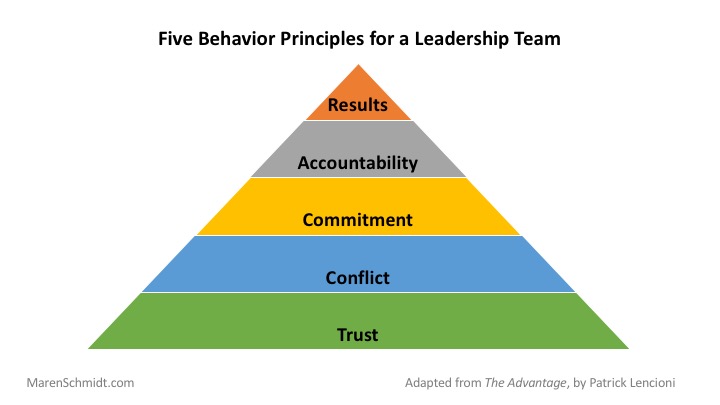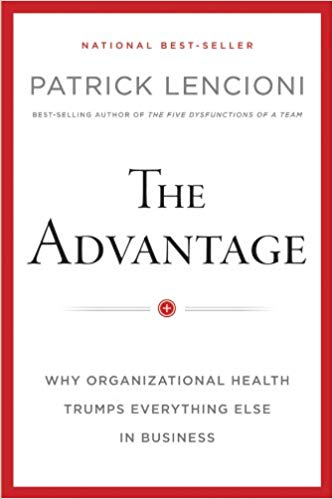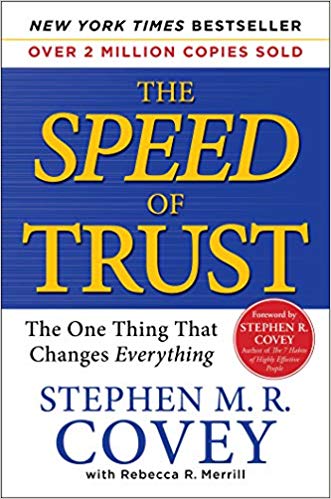
Patrick Lencioni in his book,The Advantage, asks us to imagine two organizations.
The first is led by a leadership team whose members are open with one another, passionately debate important issues, and commit to clear decision even if they initially disagree. They call each other out when their behaviors or performance needs correction, and they focus their attention on the collective good of the organization.
The second is led by a leadership team whose members are guarded and less than honest with one another. They hold back during difficult conversations, feign commitment, and hesitate to call one another on unproductive behaviors. Often they pursue their own agendas rather than those of the greater organization.
The question: What kind of advantage would the first organization have over the second, and how much time and energy would it be worth investing to make this advantage a reality?
-page 18, The Advantage
What kind of leadership team do you want to be a part of? And what kind of team are you on now?
Lencioni defines a leadership team as a small group of people who are collectively responsible for achieving a common objective for their organization.
Small group. When a group is too large, over 12 members, the group dynamics prevent the development of cohesiveness in the group. Lencioni suggests eight or less team members. Having been on organizational boards with too many people, I understand how size is a sensitive issue.
Collectively responsible refers to seeing the big picture and being ready and able to do more than one’s defined job in the organization.
Common objectives are about the goals of the organization. Cohesive team members focus first on the goals of the organization, then their department’s or personal performance.
Lencioni tells us that there are five behavioral principles that every healthy team must possess:
- Building Trust
- Mastering Conflict
- Achieving Commitment
- Embracing Accountability
- Focusing on Results

Building Trust
Lencioni says that the kind of trust needed to build a great team is vulnerability-based trust.
The balance on developing trust can be disrupted when we try to do too much too soon.
Lencioni offers a tip on how to start building vulnerability-based trust in a non-threatening way: A quick 20-minute exercise where everyone briefly tells a few details about their lives. For example:
- Where were you born?
- How many siblings do you have?
- What’s your birth order?
- What was your most interesting or difficult challenge as a child?
This exercise helps people on a team open up about topics that others probably don’t know, even if they have worked together previously. The results of this exercise can be a new level of respect and understanding within the group.
Mastering Conflict
To build a cohesive team we have to provide a way for team members to engage in healthy conflict.
The fear of conflict, Lencioni writes, is almost always a sign of problems within the group or organization.
Since life is full of problems, it’s best to get some tools to learn how to use conflict to find the best possible answers to our problems.
Conflict with trust results in a search for the truth and solutions.
Conflict without trust is politics and can lead to trying to win an argument with no regard for the truth.
Achieving Commitment
Problem solving that stems from conflict has a great benefit. When people have weighed in on the problem and the solution, they become committed to the positive outcome. They own the problem and they own the solution.
When we have buy-in from all on our team, a put-it-into-action plan emerges.
Embrace conflict as it offers a way to clearly see and define a problem. With clarity possible solutions become obvious.
Embracing Accountability
Healthy conflict helps us clearly define problems. Clearly defined problems help us seek and see possible solutions.
Committing to a solution as a team creates accountability to each person on the team. Plus, committing to a solution makes it easier for team members to hold others accountable for results and behaviors.
Are you seeing how this all begins with trust?
Focusing On Results
The most important quality of an effective leadership team is straightforward:
Does the team achieve its goals?
Even when a team has trust, healthy conflict, commitment and accountability, there are many distractions to focusing on results. Some of those distractions include:
- Loyalty to one’s department instead of the organization
- Personal career objectives
- Budget allocations
- Status
- Ego
Everyone on a leadership team needs to focus on rowing the boat in the same direction.
Even though each leadership team member has different responsibilities and authority, for the cohesive team their organization is always team #1.
Want to build a winning leadership team at your school?
Begin by building trust and take it one step at a time.
Download | Building Trust Exercise
Download | Checklist For Building A Cohesive Team

Suggested reading:
The Advantage: Why Organizational Health Trumps Everything Else in Business, pages 18 to 71.
by Patrick Lencioni

The Speed of Trust: The One Thing That Changes Everything
by Stephen M. R. Covey

2 Responses to “Building A Cohesive Leadership Team”